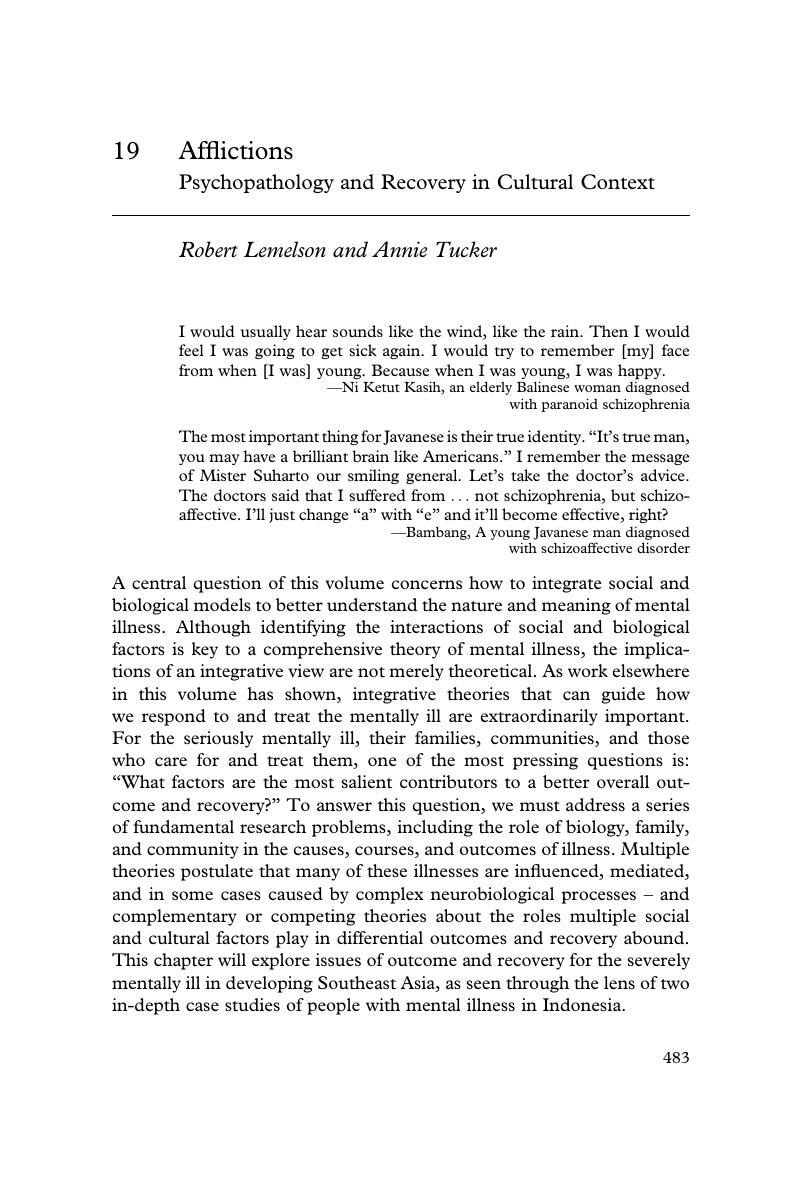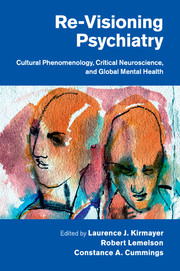Book contents
- Re-Visioning Psychiatry
- Re-Visioning Psychiatry
- Copyright page
- Dedication
- Dedication
- Contents
- Figures
- Tables
- Contributors
- Foreword
- Preface
- Glossary
- 1 Introduction: Psychiatry at a Crossroads
- Section One Restoring Phenomenology to Psychiatry
- Section Two Biosocial Mechanisms in Mental Health and Illness
- Section Three Cultural Contexts of Psychopathology
- Section Four Psychiatric Practice in Global Context
- 19 Afflictions
- 20 Eating Pathology in Fiji
- 21 Solving Global Mental Health as a Delivery Problem
- 22 Global Mental Health Praxis
- 23 Reflections Social Inequalities and Mental Health Outcomes
- 24 Re-Visioning Psychiatry
- Index
- References
19 - Afflictions
Psychopathology and Recovery in Cultural Context
from Section Four - Psychiatric Practice in Global Context
Published online by Cambridge University Press: 05 July 2015
- Re-Visioning Psychiatry
- Re-Visioning Psychiatry
- Copyright page
- Dedication
- Dedication
- Contents
- Figures
- Tables
- Contributors
- Foreword
- Preface
- Glossary
- 1 Introduction: Psychiatry at a Crossroads
- Section One Restoring Phenomenology to Psychiatry
- Section Two Biosocial Mechanisms in Mental Health and Illness
- Section Three Cultural Contexts of Psychopathology
- Section Four Psychiatric Practice in Global Context
- 19 Afflictions
- 20 Eating Pathology in Fiji
- 21 Solving Global Mental Health as a Delivery Problem
- 22 Global Mental Health Praxis
- 23 Reflections Social Inequalities and Mental Health Outcomes
- 24 Re-Visioning Psychiatry
- Index
- References
Summary

- Type
- Chapter
- Information
- Re-Visioning PsychiatryCultural Phenomenology, Critical Neuroscience, and Global Mental Health, pp. 483 - 514Publisher: Cambridge University PressPrint publication year: 2015
References
- 4
- Cited by

